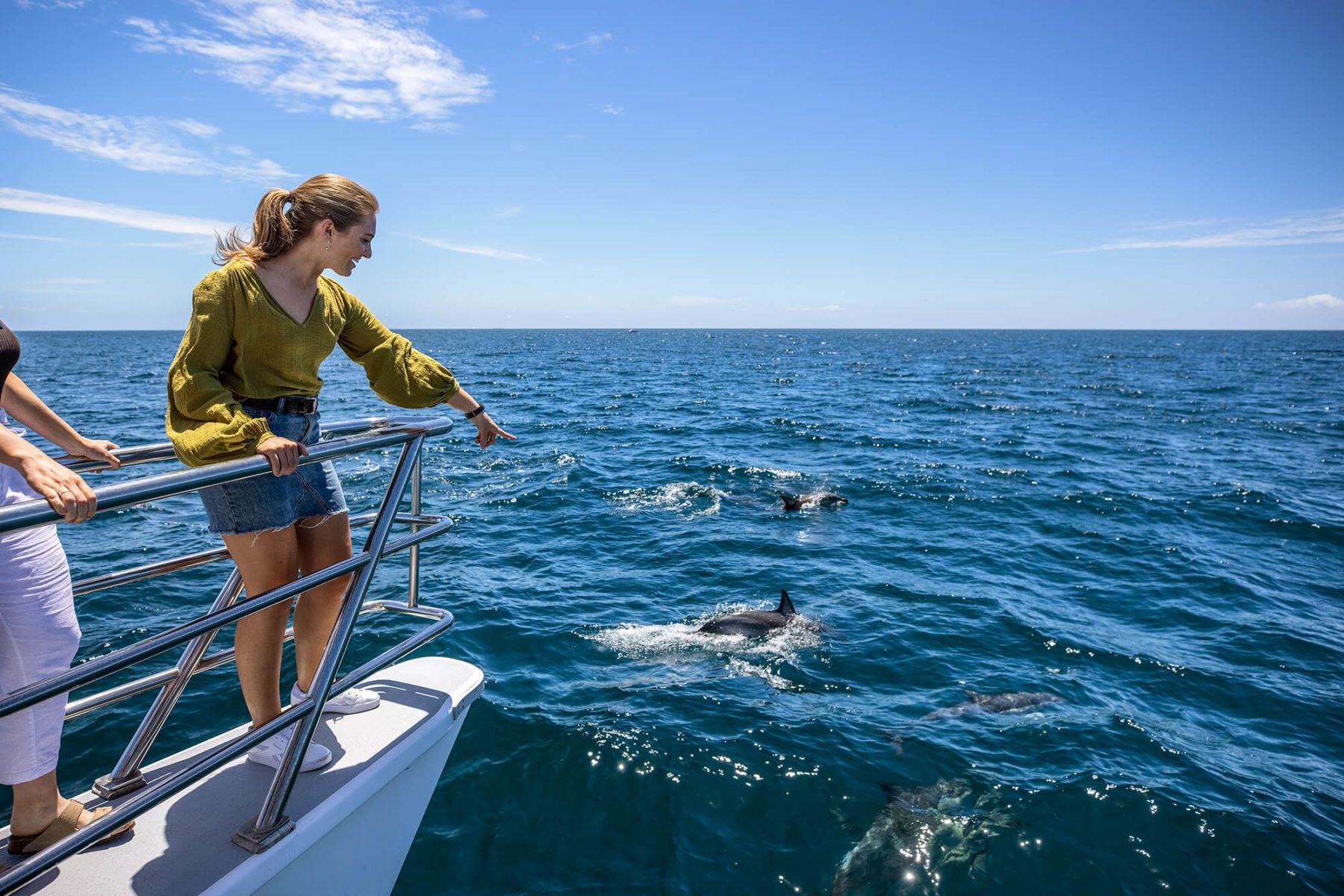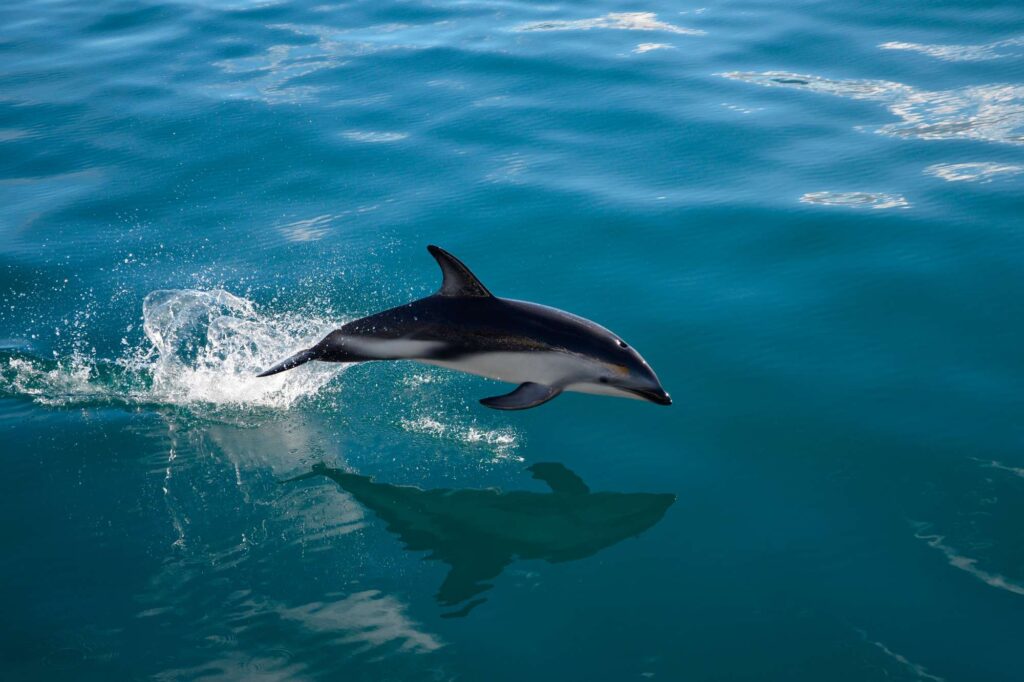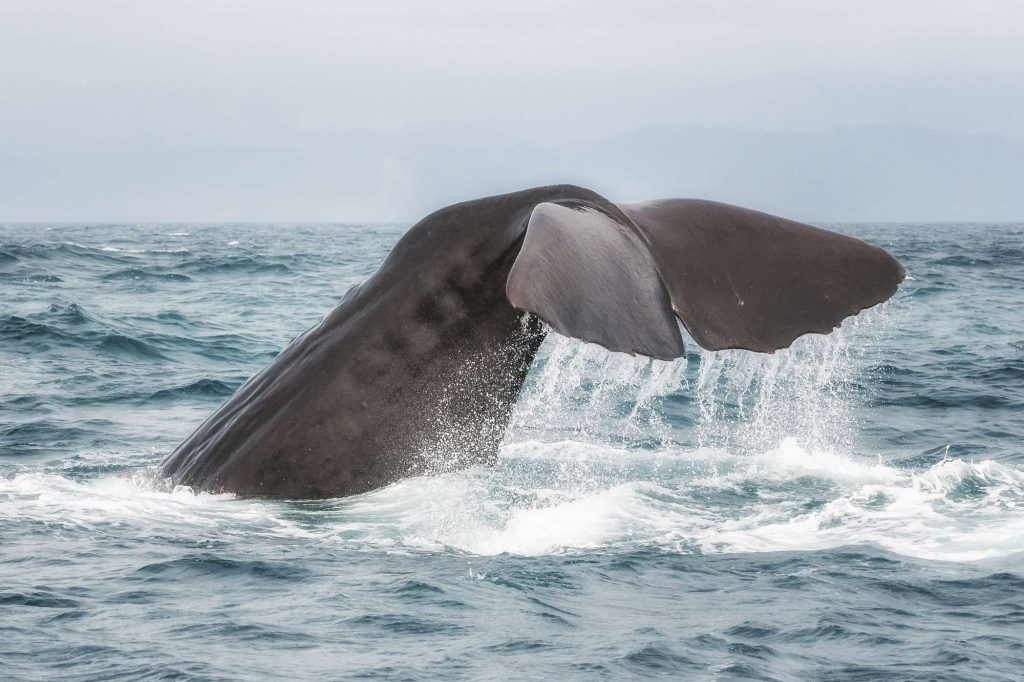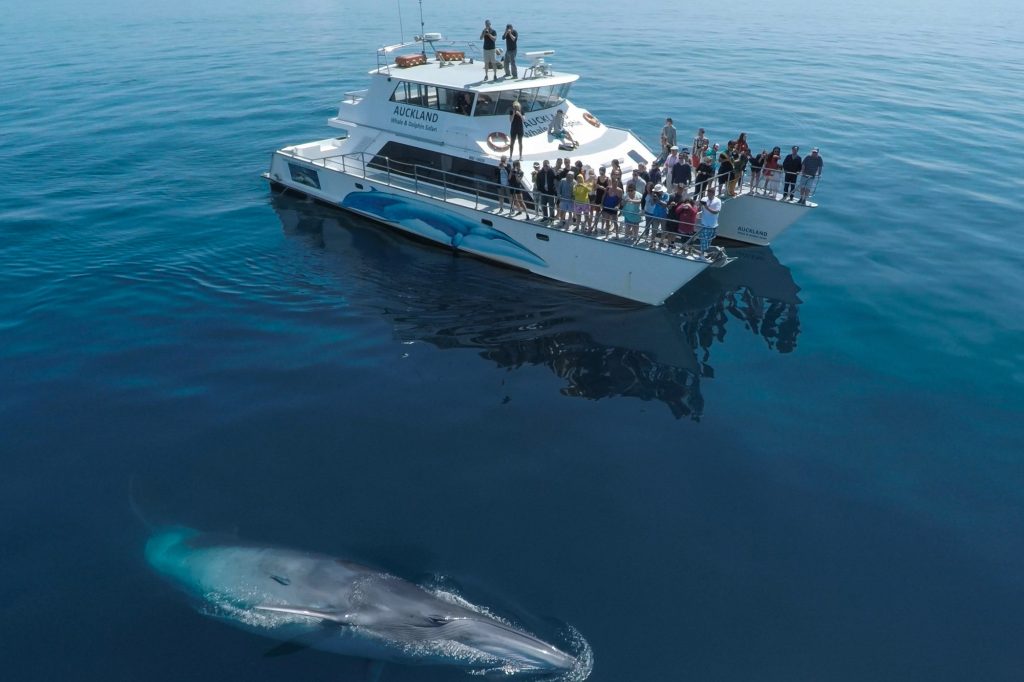
Your Guide to Whale and Dolphin Watching in New Zealand
New Zealand’s waters are rich with a diverse range of ocean life, and over half of the world’s whales, porpoises, and dolphin species can be found here. One of the reasons so many people flock to these gorgeous islands is the excellent chance of witnessing cetaceans and other marine life.
If you are looking for a wildlife experience in one of the world’s most beautiful countries, we have compiled and answered some of the most commonly asked questions to help guide your journey to New Zealand.
Where can you see whales in New Zealand?
Whale watching is concentrated in two main areas of New Zealand, Kaikoura and the Hauraki Gulf. Kaikoura, located on the east coast of the South Island, is world-famous for whale watching, with a unique submarine landscape that comprises many deep water canyons creating the perfect playground for whale pods.
Hauraki Gulf, on the North Island, is home to one of the most critically endangered whale species on the planet, called the Bryde’s whale. You can also find a whole range of marine animals there too, including dolphins, orcas, seals, and sea lions.
Where can you see dolphins in New Zealand?
There are nine different species of dolphin living in New Zealand’s waters, including bottlenose, dusky, common and Hector’s dolphins (only found in New Zealand’s waters) including the sub-species Maui dolphin. Dolphins can be found sharing the waters with the whales in Kaikoura as well as Akaroa and Fiordland in South Island. And in North Island you can also commonly find them off The Bay of Islands, Auckland, the Bay of Plenty.
There are a few reasons why New Zealand’s waters are so rich with life. The first of which is its unique extension over 30 degrees of latitude – this means it is both subtropical and subantarctic. New Zealand is also close to a number of current systems and water masses which help bring life from all over the world. Due to the country’s relative isolation from the rest of the world, many of the 65,000 marine species found here are unique to New Zealand.

Where can you swim with dolphins in New Zealand?
It was possible to swim with dolphins in the Bay of Islands, but this was banned in 2019. This ban hasn’t yet been enforced in other parts of the country. We recommend if you do want to swim with dolphins you do so with an accredited, responsible activity provider and follow animal welfare guidelines. Dolphins are also known to interact with swimmers off beaches in places like the Coromandel and the Bay of Plenty as well as surfers off the Catlins coast.
What types of whales are found in Kaikoura?
There are many species of whale to be seen off the shores of Kaikoura, but the sperm whale is what it is known for. In fact, New Zealand is one of the only places where they can be seen all year round. Humpback whales migrate from the Antarctic to the warmth of the tropics via the waters around New Zealand and are seen during the austral winter months.
You can also see the spectacular blue whale, the endangered southern right whale, orcas, and enormous pods of pilot whales. This incredible mix of some of nature’s great behemoths make for some awe-inspiring sights.

When can you see whales in Kaikoura?
As well as sperm whales, which can be seen all year round, there are two main migration periods during which you can see many other species of whale. May to October is known as the colder season, and this is the time you can spot humpbacks, southern right whales and pilot whales. The warmer season, from November until March, is the time to possibly see migrating orca pods and blue whales.
During the summer, you are less likely to see migrating whales, however it is the most popular time of year to visit New Zealand. Thanks to the perennial sperm whale, it remains a good season for whale watching with dusky and Hector’s dolphins also likely to be seen.
What is the best time to go whale watching in Kaikoura?
Whale watching boat tours operate several times daily depending on demand and weather. Early morning excursions are often quieter than those later in the day plus there is the added pleasure of calmer waters and, hopefully, a glorious waking sky.
This is one of the most popular activities for visitors to New Zealand, so advance booking is necessary.
How much is whale watching in Kaikoura?
The cost for whale watching varies as there are both boat trips and sightseeing flights options available. Prices start from about 150 NZD, which works out to around £70-75. The high success rate of these trips ensures value for money.
When can you see whales in Auckland?
You can see whales all year round in Auckland, although larger pods tend to be seen in winter time. Auckland provides easy access to the Hauraki Gulf Marine Park, where you can witness whales at play in the Pacific Ocean. The gulf itself covers an enormous 4000 square kilometres and is home to a diverse collection of marine animals. You can also enjoy day trips to islands such as Waiheke and Great Barrier Island which both offer chances to see cetaceans en route.
There are 50 islands within the park, and it is the place to go if you want to see the aforementioned Bryde’s whale, which is an endangered species that can feel at ease in the protected waters of the Hauraki Gulf. The life-supporting capacity of this marine park is enormous, and the area itself has strong ties to the cultural and spiritual history of New Zealand’s native inhabitants, the Maori.

What kind of whales can you see in the Hauraki Gulf?
In the waters surrounding Auckland, the Hauraki Gulf, you will find a whole range of cetaceans, including the endangered Bryde’s whale, which is the most commonly witnessed whale in these waters. You might also spot sei whales, dwarf minkes, long-finned pilot whales, and even orca.
In terms of other cetaceans, you can see both the common dolphin and bottlenose dolphin, both of which are frequently spotted. Watching them at play in the crystal waters is a truly memorable experience, and one that is made even lovelier due to the stunning landscape of New Zealand’s coastline.
Is New Zealand on your travel list? Learn more about the incredible experiences and tailored New Zealand holidays, or give our Travel Specialists a call today on 01737 214 250.



 Instagram
Instagram
 Facebook
Facebook
 YouTube
YouTube